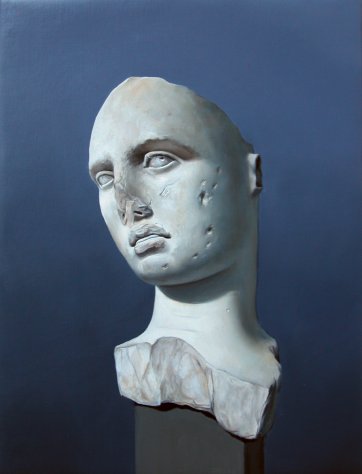"The lapse of time and rivers is the same,
Both speed their journey with a restless stream;
The silent pace, with which they steal away,
No wealth can bribe, no prayers persuade to stay…"
William Cowper, A Comparison, 1780
These paintings by Juan Ford and sculptures by Sam Jinks evoke the impermanence of human life. In his divided face self-portrait Jinks revives his memory of owning an anatomical model in childhood ‘and how those ideas of death and the body’s fragility were very abstract ones’. He conceived the idea for Woman and child as a vision of the cycle of life through generations. Both Jinks and Ford reference creatures of the natural world with fleeting life cycles. Working in Rome, Ford painted these portraits of ancient sculpted heads whereby ‘in spite of their fractured state, like a cicada shell retaining the shape of the insect, the trace of the life force of these people was left in these faces.’ In Hanging Man, Jinks modelled the position of the hands from footage of a mosquito emerging from the pupal skin and flying from the surface of the water in the documentary Microcosmos: Le peuple de l'herbe: ‘it made it more other-worldly, more medieval, more like a precious artefact’.

















